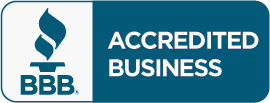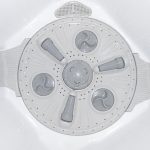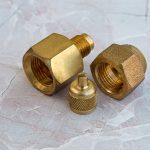Water Quality in Winnetka, IL
By Carrie Hoza, 4th Generation Licensed Plumber, Bratschi Plumbing Co.
In Winnetka, our village water and electric utilities are as a single department and was one of the first village-owned and operated utilities in the county. The first pumping plant was built in 1893 and included a tall, 199-foot brick octagonal tower located on the lakeshore. While the tower housed a 46,000-gallon interior tank, residents were still allowed to climb an internal staircase to take in the views from a platform near the roofline. From the “Water Tower” near the lake at the east end of what was then known as North Avenue, one could see all the way west to the Techny Towers. The road, connecting the two, is what we now know as Tower Road.
In the early days, the plant took water from Lake Michigan into the pumping station before selling it at a flat rate by the tank ($1.00 per tank). Residents could also pick up their water at public hydrants and carry it home for a rate of 50 cents per month. The water did not go through a filtration system until 1922 when it was deemed necessary due to typhoid outbreaks.
Today, continuous testing of the water purification processes and filters allows for the residents of Winnetka and Northfield to have access to high quality water. But with lead in water
regularly making news headlines over the past year, knowing more about the safety of the tap water in Winnetka can give you some peace of mind. Lead found in water does not come from the treatment plant, nor the water mains. Rather, it comes from lead service lines that run between the water main in the street and the home, as well as from lead plumbing.
According to the Village, there are still Winnetka homes that utilize lead water service lines. However, the Water Department regularly monitors lead levels of the drinking water in the distribution system. The EPA standard for lead levels is less than 15 parts per billion in at least 90% of the samples taken, and Winnetka samples fall well below this action level.
If you still have concerns about lead in your tap water, here are some tips to follow at home:
- How can you tell if your water service is lead? Lead service lines are generally a dull gray color and very soft. The service line can typically be located coming through the floor prior to your water meter.
- A licensed plumber is able to identify if your home has a lead service line, can check for lead solders in your internal plumbing, and will look for fixtures containing lead. Consider also using a licensed plumber to replace any of these fixtures.
- To improve the quality of your water, if faucets have not been used for a long period (such as when on a vacation or in an infrequently used bathroom), run cold water from the faucet prior to using this water for drinking or cooking. Other household activities such as washing clothes, dishes, flushing the toilets or showering are ways to flush the pipes without feeling like you are “wasting water.”
- A home treatment device, such as an Everpure water filter, can also effectively reduce traces of lead. The filter should list on the package that it is certified to reduce
lead according to NSF/ANSI-53. A licensed plumber is able to install, repair or replace an NSF-approved water filter system in your home.
You can learn more about the lead risk in Winnetka tap water by reading the “Consumer Confidence Water Report” on the Village website: www.villageofwinnetka.org.





